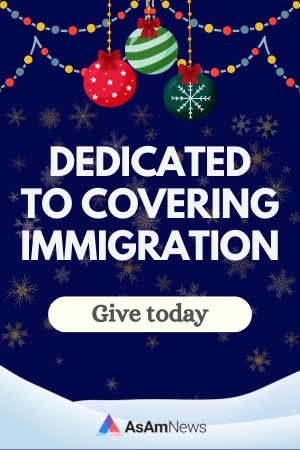
By Ernabel Demillo,
Asian American Life
It was the largest refugee resettlement program in U.S. history. More than 1 million Southeast Asians, victims of war and genocide were granted asylum and resettled in the U.S.
Some 10,000 Cambodians, were resettled in the Bronx, just as people who were living there in the 80s were fleeing the Bronx because of crime and violence.
“After the 1960s many of the middle-class families moved out of the ghetto … left behind were the poorest of the poor,” said Eric Tang, an associate professor at the University of Texas at Austin, and a former community organizer in the Bronx.
“Sociologists refer to this new era of the ghetto, which is not just racially segregated, but economically homogenously poor as ‘hyperghetto’. These are places that are void of capital investment, they often get over run by the drug economy and where police brutality is rampant. “
According to Tang’s recently published book, “Unsettled: Cambodian Refugees in the New York City Hyperghetto”, the Cambodian refugees were re-settled in these hyperghettos, like the Bronx in the 80s; Lowell, Mass., and Providence, R.I.
This population, already reeling from war back in their native country, found themselves in the United States struggling, and then left behind. Many of the Cambodian refugees were farmers with little schooling and skills. More than 30 years later, there hasn’t been much improvement.
According to recent U.S. census data, 80% of the Cambodian population in the Bronx receives some kind of welfare assistance, 42% live in poverty, close to 24% are unemployed and 62% have less than a high school education.
Tang blames the U.S. refugee program, which he says abandoned the refugees.
“I don’t think our U.S. refugee policy is really a resettlement policy, “he said. “It’s a policy that says, ‘ok, here’s who were going to take from certain countries based on our geopolitical interest’ but once they are here there isn’t a plan economically for how they’re going to be fully integrated and develop the social and economic capital they need to secure livable wage jobs for the long haul.”
For more on the Cambodians in the Bronx watch Asian American’s Life story here:
Asian American Life, is a 5-time Emmy-nominated magazine program produced by CUNY-TV in New York.
The show premieres the first Tuesday every month at 8 p.m. on Channel 75 and 25.3 in the New York City viewing area, and in syndication on Ch. 25 (NY Media). You can watch all our episodes online at http://www.cuny.tv/show/asianamericanlife.
AsAmNews has Asian America in its heart. We’re an all-volunteer effort of dedicated staff and interns. You can show your support by liking our Facebook page at www.facebook.com/asamnews, following us on Twitter, sharing our stories, interning or joining our staff.


RE: Cambodian Community Struggles in Hyperghettobin the Bronx:Why did they get sent to the low income areas while refugees today are sent to small suburban and rural areas?